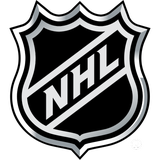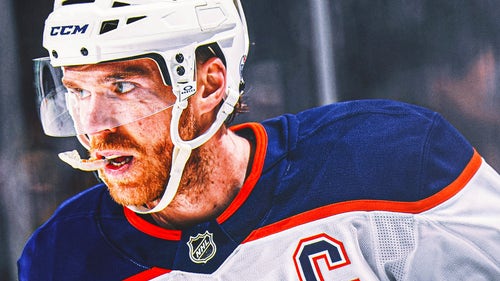
Players slow to adopt new helmet
Sidney Crosby came back — and soon was forced out of the Pittsburgh Penguins lineup with another concussion — with nearly the same helmet. Claude Giroux, like many in the NHL, wears the same brand helmet as the gloves, sticks and skates he uses as part of a sponsorship agreement. His fellow concussed Philadelphia Flyers teammate Chris Pronger didn’t change his helmet despite some scary collisions before he was finally forced to sit out the rest of the season.
The NHL and the NHL Players' Association insist the helmets aren’t a significant factor one way or another when it comes to concussions, an opinion that isn’t shared by one Hall of Famer.
“Those are the kinds of players we are looking for,” said former Edmonton Oilers and New York Rangers great Mark Messier, who is working with his sister, Mary-Kay, and a manufacturer to push what they believe is a safer helmet. “We know it’s a competitive landscape and there is a lot of money going to players so they’ll wear a certain brand of equipment. But compared to their salaries, they could be jeopardizing their careers by taking this money over a better helmet with more protection.”
The Messier Project, launched two years ago along with Cascade Sports, aims to provide what it feels is a better helmet to all levels. Messier said the M11 helmet has seen a decent adoption at the youth levels, but it’s been hard to find a player in juniors, minor league hockey or the NHL with the lid.
Cascade, unlike the major brands, doesn’t pay players to wear their helmets and currently has only about a half-dozen NHL players sporting the M11, according to Mary-Kay Messier.
“There’s still a long way to go in the NHL in terms of education,” said Mary-Kay Messier, vice president of development at Cascade Sports. “The culture of hockey is that you play through injuries. It’s such a sport of bravado. It’s that way in hockey more than any other sport. Part of the Messier Project is educating players that while they may be able to play through a sprained ankle and other strains, you can’t play through a concussion.”
The NHL — the first league to implement concussion protocols nearly 15 years ago — has strengthened its standards when it comes to how players are cleared to return after a concussion. Penalties, fines and suspensions have occurred much more frequently in the wake of a series of high-profile concussions — from Crosby to Boston’s Marc Savard to Montreal’s Max Pacioretty — a season ago.
What hasn’t changed is the league and union’s stance on helmets.
“Helmets will protect against skull fractures and may mitigate the effects of direct blows to the head but will not eliminate concussions,” NHLPA spokesman Jonathan Weatherdon said in an email. “They will not prevent the angular movements of the head and brain relative to the rest of the body that are responsible for many of the concussions in hockey.”
The NHL didn’t respond to inquiries on helmet safety, although since it works jointly on player safety with the NHLPA, the message would be about the same.
John O'Donnell, equipment manager for the Harvard men’s hockey team, said he doesn’t need the studies commissioned by Cascade to show its helmet is a safer alternative. He has seen it firsthand.
“We are in the third season since the switch,” O’Donnell said. “The season I came to Harvard, we had a different helmet and had six concussions that year. I felt it was my job to research a good helmet, and lo and behold, Cascade had just launched its helmet. It’d be a shame that we didn’t get the kids the highest-rated helmet. We’re still getting kids lit up (in collisions).”
Still, the team hadn’t had a concussion as of Friday and the hit O’Donnell referenced was eerily similar to Pacioretty’s collision with a divider between the benches after a shove from Boston defenseman Zdeno Chara last March. Pacioretty suffered a concussion and a fractured vertebra. Granted, the NCAA mandates full-face cages and the speed might not have been what it was in the Pacioretty incident, but O’Donnell credits the helmet nonetheless.
“The kid didn’t miss a shift,” O’Donnell said.
The science, even if the NHL doesn’t seem to heed it, is there, Mary-Kay Messier said. M11 has a flexible shell — as opposed to the more rigid material most others use — that can displace the impact of a hit, while the liner and more contoured fit also protects the head better than the competition, according to Cascade.
And other manufacturers — who have seemingly made greater strides when it comes to skates and hockey sticks in recent years — are responding. Bauer, for example, will introduce the Re-Akt helmet in May that company spokesman Steven Jones said is “designed to manage rotational impacts” — code words for the typical impacts a player absorbs during the course of play.
Since 44 percent of the NHL players use Bauer helmets, it could be a quicker route to get players a better helmet if the hype matches the performance.
Reebok, which is the NHL’s official supplier and counts Crosby among its stable of sponsored players, didn’t respond to multiple interview requests.
When it comes to just about every other piece of equipment, NHL players lead the way when it comes to adopting technology, like the latest composite sticks that can often cost more than double that of a helmet.
Mark Messier is waiting for Crosby or another in the long line of concussed star players to be a trendsetter when it comes to head protection.
“We’ve gained tremendous support in midgets all the way through juniors without a strong NHL endorsement,” Messier said. “It’s an encouraging sign for the future that the players and their parents are choosing a helmet that is scientifically the best option. Usually things trickle down from the NHL to other levels of hockey.”



